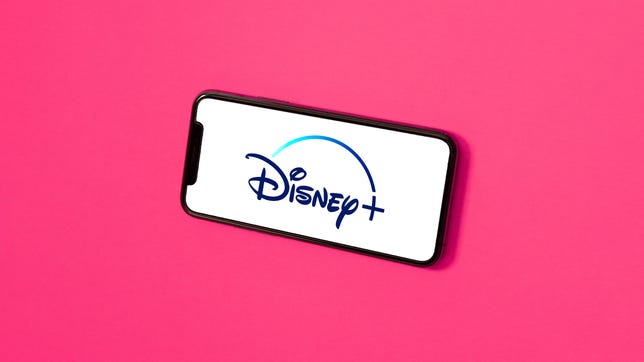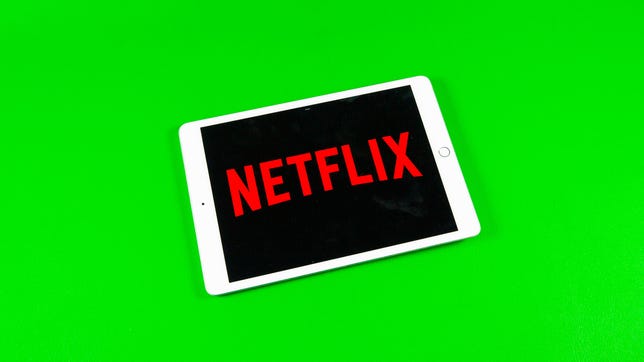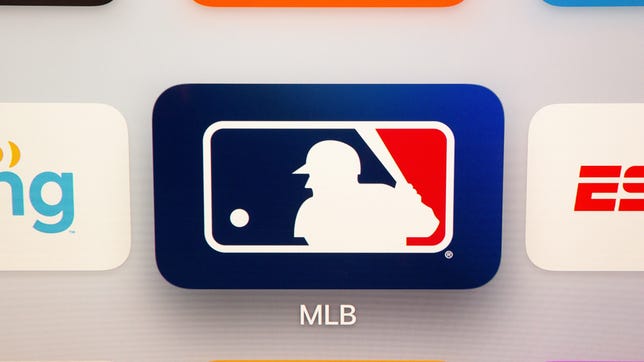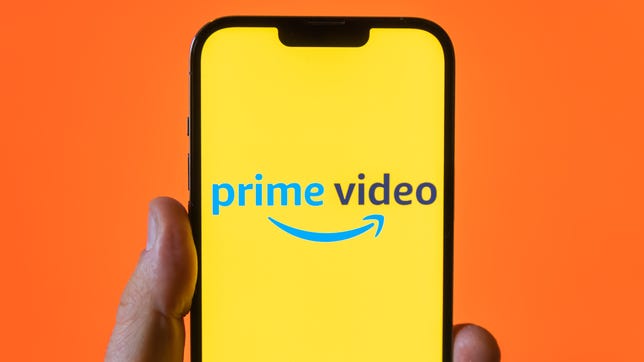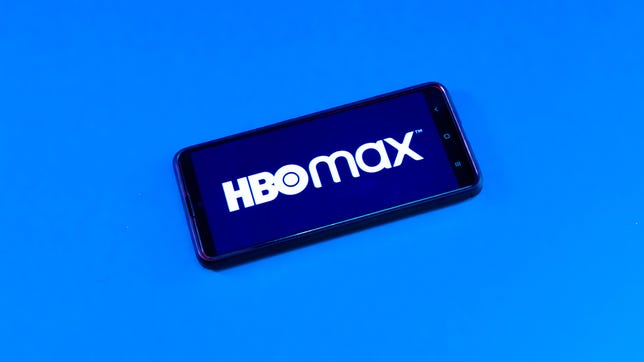Technologies
Best Streaming Service Deals From T-Mobile, Verizon and More
These money-saving deals can help you save on HBO Max, Netflix, Disney Plus, MLB.TV and other streaming services.

In an era of Disney Plus, Netflix, Hulu, Paramount Plus, HBO Max and Peacock, there seem to be nearly as many streaming services as there are days in a month. With subscription prices constantly rising,the cost of signing up for more than one service can quickly rival an old cable bill.
Depending on your cellphone service, however, there could be ways to score discounts on one or more of these options. Some T-Mobile plans can get you a free subscription to Netflix and Apple TV Plus. Verizon offers the Disney Bundle (Disney Plus, ESPN Plus and Hulu) with certain plans, while one of Cricket Wireless’ unlimited plans includes ad-supported HBO Max.
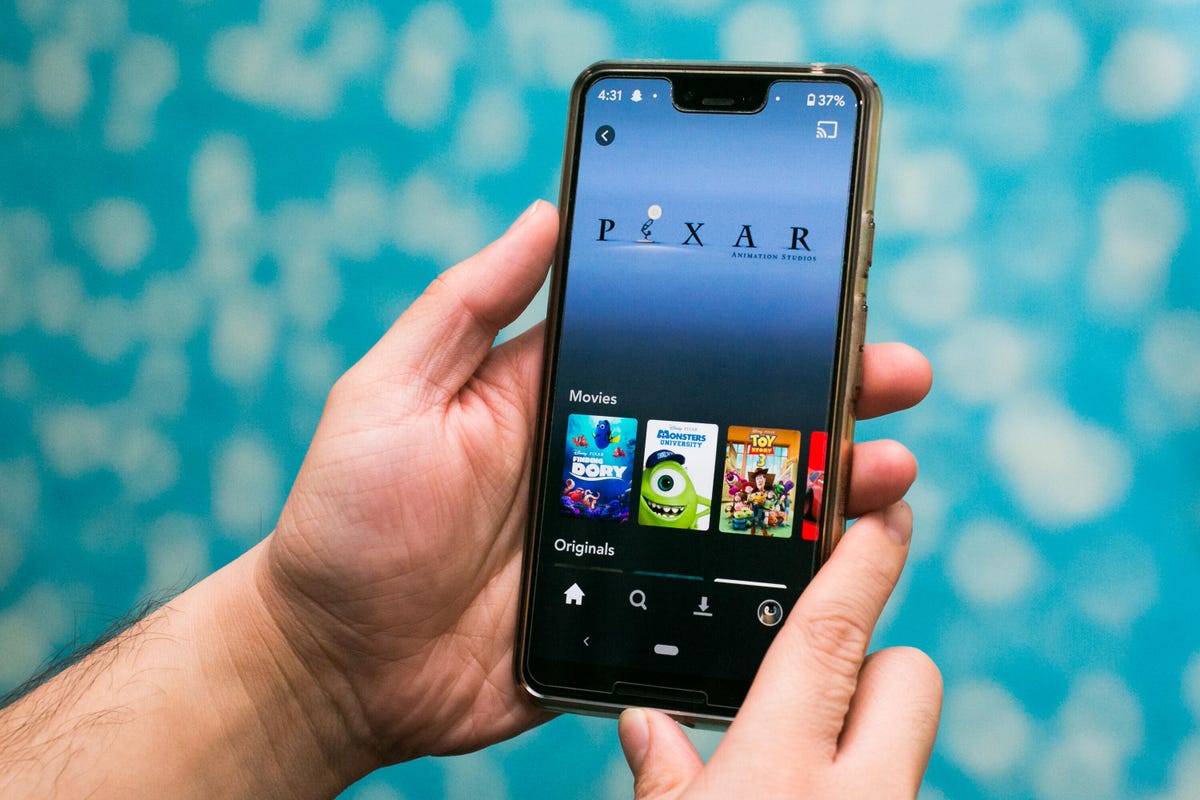

Get the best price with CNET Shopping.
Love shopping online but don’t have time to compare prices or search for promo codes? Our CNET Shopping extension does that for you, so you always get the best price.
Let’s break down the best streaming service deals that are available now from each carrier.
Read more: Best Streaming Service Deals
Verizon
Sarah Tew/CNET
Have your sights set on Disney Plus?
Verizon includes the Disney Bundle — subscriptions to Disney Plus, Hulu and ESPN Plus that run a combined $15 a month — with its 5G Play More and 5G Get More unlimited plans. Other plans, such as its most affordable Start and Welcome Unlimited plans, have six-month trials of Disney Plus included, but not the bundle.
Verizon allows mixing and matching with most of its unlimited plans, so as long as one line on your account has a Play More or Get More plan, you will be able to get the perk. Note that it is only one Disney subscription per Verizon account, not per individual line.
The deal works for both new and existing Disney Plus subscribers, so if you already have a subscription you can either cancel or, if you have the six-month trial, have the Verizon subscription run first and then have your regular subscription continue after.
It is also worth noting that the Disney Bundle Verizon offers includes ad-free Disney Plus (though Hulu still has ads). Disney’s regular triple play offer starts at $13 per month but has ads for Disney Plus and Hulu. Going ad-free for Disney Plus and Hulu in a triple play with ESPN Plus runs $20 per month.
According to Verizon’s website, both the Disney Bundle and six-month Disney Plus offerings are available until May 17. Verizon didn’t immediately get back to us about whether the deals would be extended past that date or what would happen to those who have already signed up.
Apple
On top of its Disney-related perks, Verizon includes Apple One with its One Unlimited for iPhone plan.
You can’t mix and match One Unlimited for iPhone with other unlimited plans, so all of your phone lines will need to be on the plan if you want the perk. One line gets you Apple One’s individual plan, which includes 50GB per month of iCloud Plus storage plus access to Apple Arcade, Apple Music and Apple TV Plus. Two or more lines get you Apple One’s family plan, which bumps the iCloud Plus storage to 200GB per month and adds the ability to share with up to five other users.
Apple One individual plan runs $17 per month while the family plan costs $23 per month.
You can learn more about what’s required to get Apple One with Verizon on Verizon’s website.
T-Mobile
Sarah Tew/CNET
T-Mobile, through its Netflix on Us perk, has long offered free Netflix on some of its unlimited plans, including Magenta and its newer Magenta Max option. Older plans, called One and One Plus, also have Netflix included. The version of Netflix you get depends on your plan and how many lines you have.
Currently, any type of Magenta plan will get you Netflix Basic, so long as you have multiple lines. The exception is a Magenta Max plan, where you’re required to have only one line. If you have multiple lines of Magenta Max, you’ll get Netflix Standard instead. The basic version typically runs $10 a month and lets you watch on a single screen at a time. The standard version is the most popular version of Netflix that runs $15.49 a month and allows viewing on two screens. Full details, including what you’d need to pay if you want to upgrade to a higher plan like the 4K-capable Netflix Premium, can be found on T-Mobile’s website.
Note: It’s one Netflix subscription per T-Mobile account, not per individual line.
Sarah Tew/CNET
In addition to Netflix, T-Mobile offers free Apple TV Plus as a perk. The Apple TV Plus deal is available to new and existing T-Mobile customers, but, like the Netflix deal, it varies based on your plan.
It is worth noting that T-Mobile doesn’t let you «mix and match» different plans on a family account, so you can’t have one person be on Magenta Max and get the Netflix and Apple TV Plus perk and then have other lines on cheaper Magenta plans.
A subscription to Apple TV Plus, normally $7 per month, is included with Magenta Max and specialized plans like Magenta Max 55+, Magenta Max Military and Magenta Max First Responder, among other plans. Six months of Apple TV Plus are included with plans such as Magenta, specialized Magenta plans and Sprint ONE. The company lists more eligible plans and how long they get Apple TV Plus on its website.
Sarah Tew/CNET
Are you a baseball fan? MLB.TV costs $150 per year, but customers with T-Mobile, Sprint or Metro by T-Mobile can receive a free one-year subscription to stream Major League Baseball games and events.
The deal kicked off last week just before the start of the 2023 season and runs through April 4 at 4:59 a.m. ET, and customers can redeem the limited-time offer through the T-Mobile Tuesdays app. Bear in mind that you won’t be able to stream live games in your local market with MLB TV, including those on local regional sports networks or games airing on national platforms like ESPN or TBS.
Metro by T-Mobile
James Martin/CNET
Metro by T-Mobile includes a subscription to Amazon Prime with its heritage $60 rate plan with Amazon, which differs from its regular $60 per month unlimited plan that is currently available online. To get Prime, you need to call Metro by T-Mobile customer service and request it. In addition to two-day free shipping, it also means you’ll have access to Prime Video, for streaming movies and shows like Shotgun Wedding, The Boys and The Lord of the Rings: The Rings of Power.
In addition to Prime, the plan also includes 100GB of Google One storage and 15GB of mobile hotspot. As its name suggests, Metro by T-Mobile is owned by T-Mobile and runs on its network.
Cricket
Sarah Tew/CNET
Cricket Wireless, which is owned by AT&T, has added a deal that will bundle a subscription to the ad-supported version of HBO Max with the carrier’s $60-a-month unlimited plan. The streaming service gives you access to all HBO content as well as Max originals such as Peacemaker, The Flight Attendant and Our Flag Means Death.
Note: It’s one HBO Max subscription per Cricket account, not per individual line.
Technologies
The Black Friday Gaming Deals Are Here. Shop Now and Save Big on PlayStation, Xbox and Alienware
Technologies
Looking for a Free iPhone? Verizon Will Basically Hand You One With This Black Friday Offer
Technologies
Smartphone vs. Dumb Phone: Why People Are Going Basic
Here’s how to ditch your smartphone for a dumb phone. It’s digital detox done right.

Over the past couple of decades, smartphones have become an integral part of our lives. According to the Pew Research Center, about 91% of Americans own a smartphone. Statista reports that the number of global smartphone owners is estimated to reach 6.1 billion in 2029. For many, a smartphone is an always-on internet device that keeps us connected to the world.
But there are also significant downsides to having one. If you’re concerned about how much time you spend on your phone, you aren’t alone: Some people feel addicted to their smartphones, checking their email and social media feeds hundreds of times a day. Perhaps you find yourself doomscrolling through the news or wasting time on mindless apps and games rather than being productive at work or spending quality time with your family. Sure, you could simply limit your screen time, but that takes willpower that you might not have.
This rise in this obsessive behavior toward smartphones explains the resurgence of so-called dumb phones in recent years. Sometimes referred to as feature phones, dumb phones are essentially stripped-down cellular devices that lack the bells and whistles of modern smartphones. Some only let you call and text, while others have a few more features such as a camera or a music player. Dumb phones typically offer only the most basic of features, minimal internet and that’s about it.
If that intrigues you, read on. In this guide, we’ll highlight the different kinds of dumb phones on the market, what you should look for when shopping for one, and whether a dumb phone is even right for you.
The differences between a dumb phone and a smartphone
A smartphone is essentially a tiny computer in your pocket. A dumb phone lacks the apps and features that smartphones have. More advanced dumb phones, or «feature phones,» offer a camera and apps like a calendar or a music player. Some even have minimal internet connectivity.
Many dumb phones are reminiscent of handsets with physical buttons from decades ago. Others have a T9 keypad where you press the numbers with the letters on the keypad and the phone «predicts» the word you want.There are even feature phones with touchscreens and more modern interfaces.
What should you look for when getting a dumb phone?
The dumb phone that’s best for you will depend on the reason you’re getting it. Do you want to go without internet access entirely and do it cold turkey? Then, perhaps a basic phone is what you want. Basic phones are also great if you just want a secondary emergency backup handset. Do you want at least some functionality, like Wi-Fi hotspot capabilities or navigation directions? Then look into «smarter» dumb phones that have those features.
Alternatively, if you think you still need certain smartphone apps like WhatsApp or Uber, you could look into «dumbed down» Android phones with smaller screens and keypads (sometimes called Android dumb phones). They don’t qualify as dumb phones technically, but they’re often seen as an in-between solution for those who can’t quite commit to a lifestyle change.
What are the different kinds of dumb phones on the market?
As more people seek smartphone alternatives, a large number of modern dumb phones have emerged on the market. If you’re on the hunt for one, we recommend using Jose Briones’ excellent Dumbphone Finder, which lets you filter and browse a dizzying array of choices based on your preferences and network provider. We also suggest perusing the r/dumbphones subreddit, where you’ll find a community of dumb phone enthusiasts who can assist you in your dumb phone journey.
Here are a few different kinds of dumb phones that caught our attention.
Smarter dumb phones
If you have a tough time letting go of your smartphone, there are a few smarter dumb phones on the market that might be a good gateway into the smartphone-free world. They often have touchscreen interfaces and more features you’d find on smartphones, like a music player or a camera.
Perhaps the smartest dumb phone on the market right now is the Light Phone 3, which has a 3.92-inch OLED screen and a minimalist black-and-white aesthetic. Its features include GPS for directions, Bluetooth, a fingerprint sensor, Wi-Fi hotspot capabilities, a flashlight, a 50-megapixel rear camera, an 8-megapixel front-facing camera and a music player. It also has 5G support, which is something of a rarity among dumb phones.
However, it’s expensive at around $700, which is almost the same price as a higher-end smartphone. Light also sells the Light Phone 2, which lacks cameras and a flashlight, but it’s much cheaper at $300 (about the price of a midrange smartphone). It uses an E Ink screen instead of OLED. However, some reviews have said that the texting speed is pretty slow.
Another touchscreen phone that’s similar to an e-reader and is fairly popular with the dumb phone community is the Mudita Kompakt. It has wireless charging, an 8-megapixel camera, GPS for directions, a music player, an e-reader and basic apps including weather, a calendar and more.
Barebones phones
On the other hand, if you’re ready for a full digital detox, then you could consider just a basic phone that lets you call, text and not much else. Simply harken back to the phones of decades ago and you’ll likely find one that fits that description.
One of the major brands still making basic phones is HMD Global, which also makes Nokia-branded handhelds like the Nokia 3210 and the Nokia 2780 Flip. HMD makes its own line of phones too, such as the iconic pink Barbie phone, complete with a large Barbie logo emblazoned on the front. It even greets you with a cheerful «Hello Barbie» each time it powers on. We should note, however, that HMD has said it’s exiting the US, so the only way to get one might be through third-party reseller in the near future.
There are still basic phones being sold in the US. The Punkt MP02 is one of the more interesting models, thanks in part to its unique slim design and clicky buttons. You can even send messages via Signal with it, though you’ll have to text via the old-fashioned T9 method.
Android dumb phones
Some dumb phone purists might argue that anything Android doesn’t belong in this list, but if your main goal in quitting your phone is to be free of the social media algorithm, then perhaps a scaled-down smartphone is a good halfway point for you. A couple of examples are the Unifone S22 Flip phone (formerly the CAT S22 Flip phone) and the Doov R7 Pro candy bar (available outside of the US), both of which are Android handsets but have traditional cell phone designs (The Unifone S22 Flip runs Android Go, a simplified version of Android).
This way, you still have access to your «must-have» apps, and might be able to better withstand the temptation of social media because of their tiny size and shape (or at least that’s the theory).
Should you buy an old or used dumb phone? Will it work on a carrier’s 5G network?
There’s nothing wrong with buying an old or used dumb phone, but you should make sure that it works with your cellphone network. Not all phones work with all networks, and certain carriers in the US aren’t compatible with every device, so check their restrictions. AT&T, for example, has a whitelist of permitted devices and you generally can’t use something that isn’t on that list.
As for 5G support, that’s pretty rare when it comes to dumb phones, mostly because they often don’t really need it (they typically won’t see the benefit of faster data speeds, for example). Some, however, do have 5G support, such as the Light Phone 3, the Sonim XP3 Plus 5G and the TCL Flip 4. If 5G support is important to you due to network congestion concerns, then that’s something you can keep an eye out for.
What if I’m not able to give up my smartphone just yet?
Maybe you need your smartphone for work or emergencies, or maybe you just don’t find any of the existing dumb phones all that appealing. If you don’t mind exercising your willpower, there are existing «wellness» tools on both Android and iOS that could help limit your screen time by allowing you to set app timers or downtime modes.
You could also disable and uninstall all your most addictive apps and use parental control tools to limit your screen time. Last but not least, there are several apps and gadgets designed to help you cut back on doomscrolling, like the Brick and the Unpluq tag.
-

 Technologies3 года ago
Technologies3 года agoTech Companies Need to Be Held Accountable for Security, Experts Say
-

 Technologies3 года ago
Technologies3 года agoBest Handheld Game Console in 2023
-

 Technologies3 года ago
Technologies3 года agoTighten Up Your VR Game With the Best Head Straps for Quest 2
-

 Technologies4 года ago
Technologies4 года agoBlack Friday 2021: The best deals on TVs, headphones, kitchenware, and more
-

 Technologies4 года ago
Technologies4 года agoVerum, Wickr and Threema: next generation secured messengers
-

 Technologies4 года ago
Technologies4 года agoGoogle to require vaccinations as Silicon Valley rethinks return-to-office policies
-

 Technologies4 года ago
Technologies4 года agoOlivia Harlan Dekker for Verum Messenger
-

 Technologies4 года ago
Technologies4 года agoiPhone 13 event: How to watch Apple’s big announcement tomorrow

